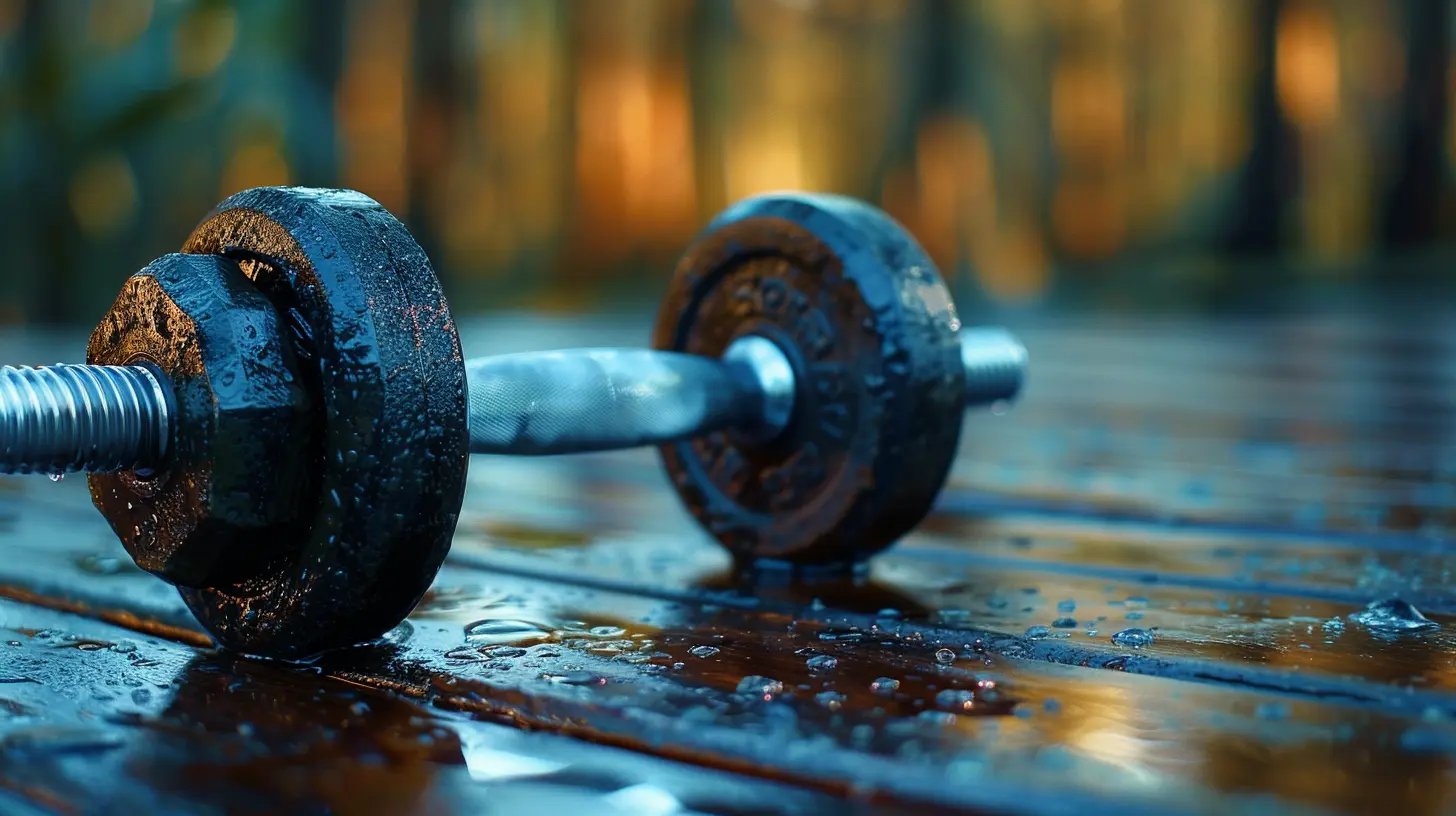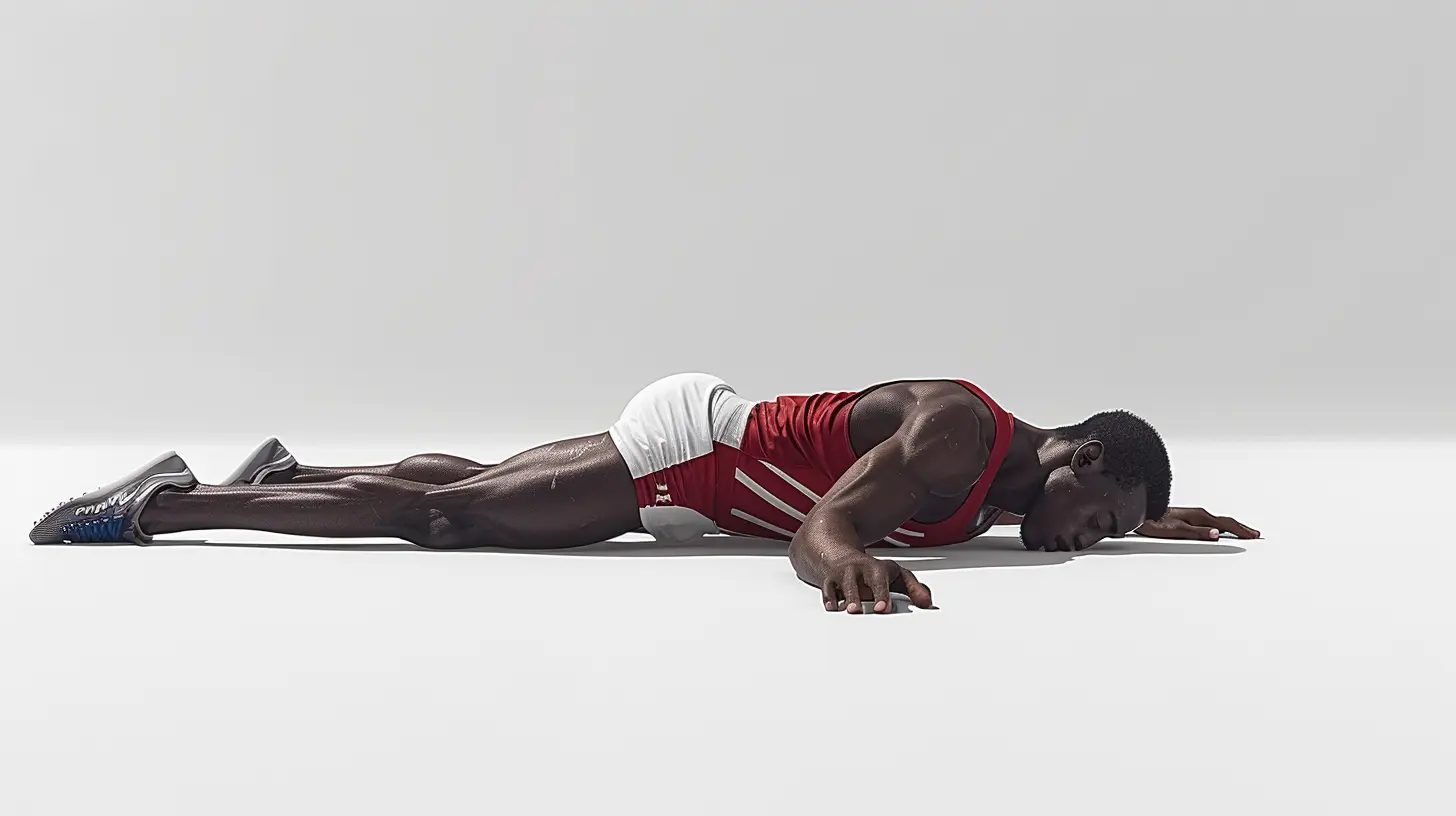Training Smarter: How to Incorporate Rest Days Effectively
6 May 2025
Let’s be real here—whether you’re a seasoned athlete or just starting your fitness journey, the idea of taking a break can feel a little... counterproductive, right? You’re pumped, you’re motivated, and you want to push harder every single day. But here’s the thing: training smarter, not harder, is the secret sauce to long-term success. And resting, my friend, is a critical part of that formula.
Incorporating rest days into your training routine isn’t just about giving yourself an excuse to lounge on the couch (although, sometimes it’s necessary). It’s about giving your body the time it needs to recover, rebuild, and bounce back stronger. So, if you’ve ever felt guilty about taking a day off, or wondered how much rest is too much, then this article is for you.
We’re going to dive deep into how to effectively take rest days and why they are just as important as the workouts themselves. Ready? Let’s jump in!
Why Rest Days Are Essential for Athletes
Let’s start with the basics. Why do we even need rest days? Can’t we just train every day and see faster results? Not exactly.When you work out, you’re essentially putting your muscles and cardiovascular system under stress. This stress is good—it forces your body to adapt, grow stronger, and become more efficient. But, and here’s the kicker, your body doesn’t actually get stronger while you’re working out. It gets stronger while you're resting.
Think of it like baking a cake. You can mix all the ingredients (your workout), but if you don’t let the cake sit in the oven (rest), it’s never going to rise. Your muscles need time to repair the microscopic tears created during intense exercise. Without that recovery time, you’re not allowing your body to fully benefit from the effort you’re putting in.
And it’s not just about muscles. Your central nervous system (CNS), joints, and even your mind need a break. Overloading your system with non-stop workouts can lead to burnout, injury, and poor performance. So yeah, rest days are non-negotiable!
Muscle Recovery and Growth
During workouts, particularly strength training, your muscle fibers experience tiny tears. Sounds scary, but it’s totally normal! These tears are the reason your muscles might feel sore after a workout. And while it may seem like a bad thing, it's actually the gateway to muscle growth. During rest days, your body repairs these tears, making your muscles stronger and more resilient.Skipping rest days can stall this process. Instead of coming back stronger, you could be breaking your muscles down even further. Think of your muscles like a rubber band. Stretch it too much without a break, and eventually, it’ll snap.
Preventing Overtraining Syndrome (OTS)
Ever heard of overtraining syndrome? No? Well, it’s not as cool as it sounds. Overtraining happens when you push your body past its ability to recover. Symptoms include fatigue, decreased performance, mood swings, and even insomnia. Sounds like a nightmare for any athlete, right?By incorporating rest days regularly, you can prevent OTS and keep your training on track. Remember, training smarter is about balance, and part of that balance is knowing when to hit pause.
How Often Should You Take Rest Days?
Ah, the million-dollar question. How often is enough? Honestly, there’s no one-size-fits-all answer. The frequency of rest days depends on several factors, including the intensity of your workouts, your fitness level, and your goals.Beginners vs. Advanced Athletes
If you’re new to fitness, you’ll likely need more rest days. Your body is still adapting to the stress of regular exercise, and it needs more time to recover. For beginners, two to three rest days per week is often a good place to start.On the flip side, seasoned athletes might only need one or two full rest days a week, depending on how intense their training is. However, even advanced athletes need to pay attention to how their body feels. Just because you’re experienced doesn’t mean you’re invincible.
Types of Exercise
The type of exercise you’re doing also plays a role in determining how often you should rest. Intense activities like heavy weightlifting or high-intensity interval training (HIIT) place more stress on your muscles and CNS, requiring more recovery time. Endurance activities like running or cycling might allow for fewer rest days, but you still need to listen to your body.For example, if you’re hitting the weights hard four days a week, you probably want to take two or three days off. But if you're doing a mix of cardio and strength, you might be able to get away with one or two rest days.
Active Rest vs. Passive Rest: Which Is Better?
Now, when we talk about rest days, you might think of lying on the couch binge-watching Netflix. And hey, passive rest (total relaxation) has its time and place. But there’s also something called active rest, and it’s a game-changer.What Is Active Rest?
Active rest means engaging in low-intensity activities that don’t put too much stress on your body but still keep you moving. Think yoga, light swimming, walking, or even some gentle cycling.The benefit of active rest is that it helps to promote blood flow, which aids in muscle recovery. It can also keep you mentally engaged without overloading your body. Plus, if you’re someone who gets restless on your days off, active rest can help satisfy that need to move without overdoing it.
When to Use Passive Rest
Sometimes, though, your body just needs to chill out. If you’re feeling extremely sore, fatigued, or mentally drained, passive rest might be the best option. Curl up with a book, take a long nap, or have a lazy day. Your body will thank you for it.The key is to mix it up. Not every rest day needs to be Netflix and chill, but not every rest day needs to be a yoga class either. It’s all about balance.
Signs You Need a Rest Day
Okay, so how do you know when it’s time to take a break? Sometimes, it’s obvious—your muscles are screaming at you, and you can barely drag yourself out of bed. But other times, it’s not so clear. Here are a few signs that your body might be begging for a rest day:1. Persistent Muscle Soreness
Feeling sore after a workout is normal, but if that soreness lingers for days, it’s a red flag. Your muscles haven’t fully recovered, and continuing to train on them can lead to injury. When in doubt, rest it out.2. Decreased Performance
Are your runs getting slower? Struggling to lift the weights you used to crush? A dip in performance is often a sign that your body is overworked. Instead of pushing through, take a day off to let your body catch up.3. Fatigue and Irritability
If you’re feeling constantly tired, moody, or irritable, it could be a sign that you’re overtraining. Your body and mind are connected, and burnout can affect both. Taking a rest day can help you reset mentally as well as physically.4. Poor Sleep
Struggling to fall asleep or stay asleep? Overtraining can mess with your sleep patterns. If you’re tossing and turning at night, it might be time to scale back your workouts and focus on rest.How to Make the Most of Your Rest Days
So, you’ve committed to taking rest days. Awesome! But how do you make sure you’re getting the most out of them? Here are a few tips:Stay Hydrated
Even on rest days, hydration is key. Drinking enough water can help flush out toxins, reduce muscle soreness, and keep your body functioning at its best.Focus on Nutrition
Rest days are a great time to dial in your nutrition. Eating a balanced diet rich in protein, healthy fats, and complex carbs will give your body the fuel it needs to repair and grow. Focus on whole foods and avoid junk that can slow down recovery.Stretch and Foam Roll
Gentle stretching or foam rolling can help release tension in tight muscles and promote blood flow. Even just 10 minutes can make a big difference in how you feel.Get Enough Sleep
Sleep is when your body does its best recovery work. Aim for 7-9 hours of quality sleep on your rest days to help your body fully recuperate.Practice Mindfulness
Rest days aren’t just for your body—they’re for your mind, too. Try practicing some mindfulness techniques like meditation or deep breathing. This can help reduce stress and improve your overall well-being.Conclusion: Work Hard, Rest Harder
At the end of the day, rest days are not a sign of weakness; they’re a crucial part of becoming a stronger, faster, and healthier athlete. Whether you’re just starting out or you’ve been training for years, incorporating rest days into your routine is non-negotiable. Listen to your body, give it the time it needs to recover, and you’ll come back better than ever.So, the next time you’re tempted to skip a rest day, remember: you’re not being lazy—you’re being smart.
all images in this post were generated using AI tools
Category:
AthleticsAuthor:

Onyx Frye
Discussion
rate this article
6 comments
Zarenith McMahan
Embracing rest days is not a sign of weakness; it's a strategy for strength. Prioritize recovery as fiercely as you pursue your goals. With each rest, you rebuild, recharge, and prepare to conquer the next challenge. Train smart, rise stronger!
May 15, 2025 at 12:42 PM

Onyx Frye
Absolutely! Rest days are essential for optimal performance and strength. Prioritizing recovery helps ensure long-term success and resilience. Thank you for highlighting this important aspect!
Judith Hardy
Rest days optimize recovery, enhancing overall performance.
May 14, 2025 at 7:10 PM

Onyx Frye
Absolutely! Rest days are crucial for recovery, allowing muscles to heal and grow stronger, ultimately boosting overall performance.
Ashley Cooper
Rest days: the unsung heroes of the athletic world! Like sneaky ninjas in sweatpants, they swoop in to save our sore muscles and boost performance. Who knew that lounging on the couch could be a secret training tactic? Don’t forget to reward your ‘athletic endeavors’ with popcorn and Netflix!
May 13, 2025 at 7:41 PM

Onyx Frye
Absolutely! Rest days are vital for recovery and performance enhancement. Embracing them, along with some relaxation, can truly elevate your training routine. Enjoy that popcorn and Netflix!
Valentina Curry
Great insights on the importance of rest days! It's refreshing to see a focus on smarter training rather than just pushing harder. Balancing effort and recovery is key to long-term success in sports. Thank you!
May 10, 2025 at 6:37 PM

Onyx Frye
Thank you for your kind words! I'm glad you found the insights helpful. Balancing rest and effort is crucial for sustainable progress.
Regina Simmons
Rest days are essential for peak performance! Embrace them as opportunities for recovery and growth. Remember, even champions need time to recharge. Keep pushing forward, but don’t forget to rest!
May 9, 2025 at 12:52 PM

Onyx Frye
Absolutely! Rest days are vital for recovery and enhancing performance. Embracing them will lead to better training outcomes and overall growth. Thank you for highlighting their importance!
Sierra Clayton
Rest days: because even athletes need a break from pretending to enjoy kale smoothies!
May 6, 2025 at 6:55 PM

Onyx Frye
Haha, true! Rest days are essential for recovery—enjoying some treats without guilt is part of a balanced approach!



